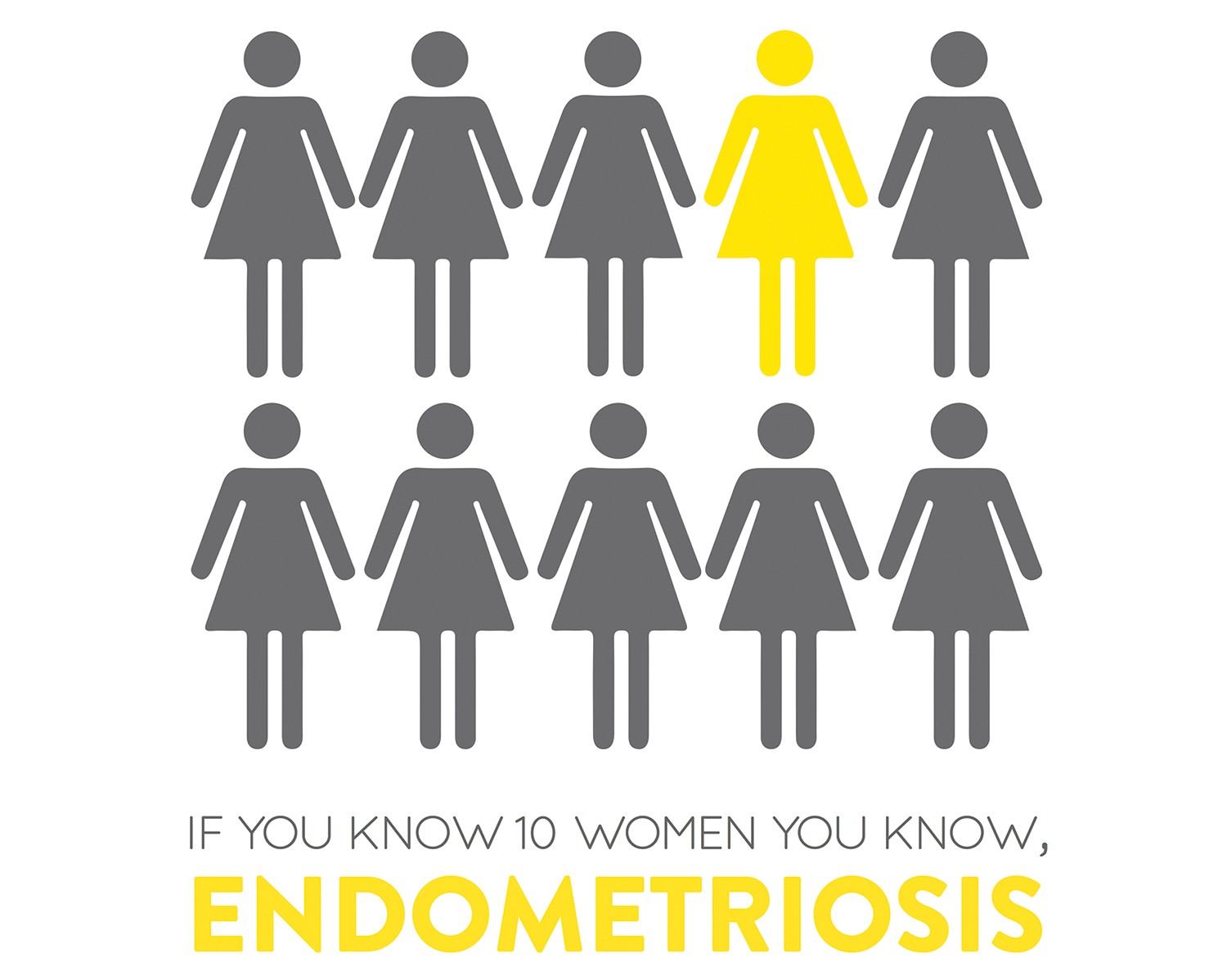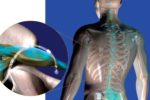March is National Endometriosis Awareness Month

It’s an invisible and chronic illness with no cure that effects 76 million women worldwide.
Many may be confused by what endometriosis actually is. Any woman who suffers from it will adamantly note it’s not simply a “bad period with a few cramps.” Sufferers may spend days hunched over in debilitating pain. Treatment may require expensive medication and sometimes involves invasive and painful surgeries. It is uncontrollable painful bleeding that makes it nearly impossible to even get to work or to school. It’s a diagnosis that can literally change a woman’s entire life. Thanks to National Endometriosis Awareness Month in March, more and more people are gaining a better understanding of how real and debilitating this condition truly is.
Through this campaign, the aim is to not only spread the awareness of the disease, but to also highlight the consequences of living with endometriosis for the sufferer, the care giver(s) and anyone affected by the disease. It is also designed to make the medical community, employers, the education sector, politicians and society in general more aware of how this disease consumes a woman’s life. For sufferers, it is hoped they can embrace more consistent care and treatment while also providing an opportunity for them to actively help make a difference. A general lack of awareness by both women and health care providers can result in appreciable delay from when a woman first experiences symptoms until she is eventually diagnosed and treated. Pregnancy has been known to relieve symptoms, but it is not recognized as a cure for the disease.
Endometriosis affects more women than breast cancer, but since the disease is not terminal, it does not get the attention it deserves. Clinically speaking, endometriosis is a disorder in which the endometrial tissue, or the inner lining of the uterus, migrates to areas outside the uterus, most commonly the ovaries and Fallopian tubes. The endometrial tissue is the same tissue that thickens throughout the menstrual cycle and sheds (bleeds) causing the menstrual period. When it occurs outside of the confines of the uterus, the blood is left with nowhere to go, which results in intense pain within the pelvic region and can sometimes lead to the formation of cysts or adhesions.

The symptoms of endometriosis can include pelvic pain, heavy menstrual periods, bleeding between periods, fatigue, a suppressed immune system and infertility. Because many other conditions can cause these symptoms, endometriosis is often difficult to diagnose. While the causes of endometriosis are not always clear, it tends to run in families. As such, women have a higher risk of developing the disease if their mother and/or sister(s) are also affected. Even though endometriosis has been associated with immunological dysfunctions and inflammation, it has not been conclusively proven to be an autoimmune disease.
Treating this condition calls for symptom management with pain medication, drug therapy and hormonal treatments. Surgically, it may require the removal of the misplaced endometrial tissue while simultaneously preserving the uterus. With severe cases – or in instances where women do not desire to reproduce in the future – a hysterectomy may be performed.
According to an article posted on bcwomens.ca last spring, a new research breakthrough may give sufferers hope in managing endometriosis. A gynecological disorder, endometriosis affects one in 10 women of reproductive age. Sadly, this condition is often left undiagnosed and untreated, and studies have shown that many women wait up to 10 years before receiving a diagnosis.
Endometriosis has typically been viewed as a hormonal and inflammatory disorder. However, researchers have recently discovered non-hereditary gene changes which impact the growth of cells. While these gene changes are often seen in cancer, the researchers concluded they do not lead to cancer in the case of endometriosis. This discovery was made by researchers from BC Women’s Hospital + Health Centre, BC Cancer Agency, Vancouver Coastal Health, the University of British Columbia along with collaborators at Johns Hopkins Medical Institutions, who examined tissues of women with endometriosis to reach their conclusions and make this discovery. This fascinating discovery now leads the way to further understanding how common these gene mutations are, and which types of endometriosis have mutations. With additional research, there is hope that scientists might be able to apply this new information to ultimately categorize endometriosis and greatly improve treatment with more individualized approaches to management.
The article quoted Dr. Michael Anglesio, assistant professor, Department of Obstetrics and Gynecology, UBC, as saying, “This is the first time modern genetic research methods have been applied to endometriosis. These mutations are a first step in understanding the breadth of symptoms and outcomes that affect every patient differently. Finally, we have a roadmap to find the right treatments.”
Other advances in furthering the understanding of this disease include the Endometriosis Promotion Project (EPP) in Asia, which is conducting a multi-national and multi-center epidemiological study over the course of three years (April 2017-March 2020) and will investigate the pattern of cyclic or acyclic pain and how that impacts both the personal and social lives among young women. The end points this study hopes to reach include identifying high-risk groups of young women who may have endometriosis; to analyze the demographic profiles of these women in various countries; and to reach early detection of this disease so early management can be enacted.
It is important to spend time in March educating oursevles about this debilitating disease that affects so many women. Sadly, endometriosis is an illness no one truly gets until they actually get it.
Sources: womenshealth.northwestern.edu; pinterest.com, bcwomens.ca, awarenessdays.com, and endometriosis.org.






